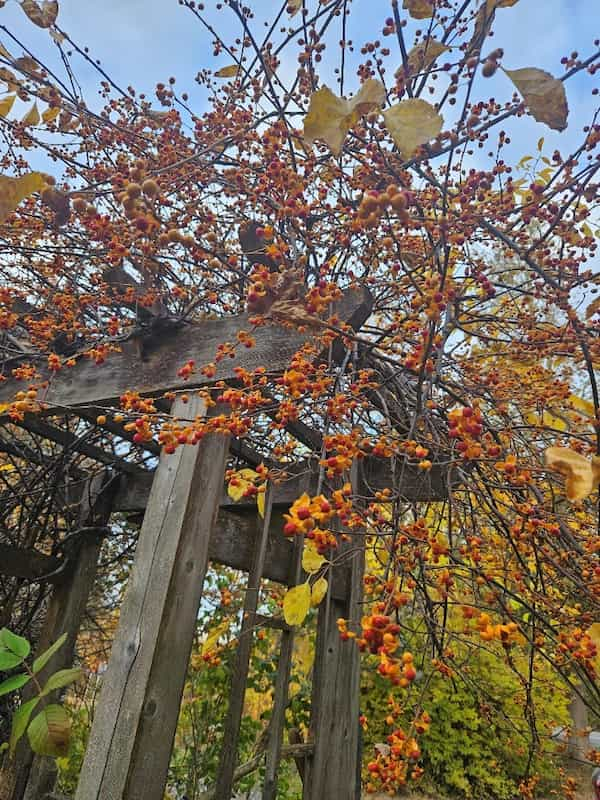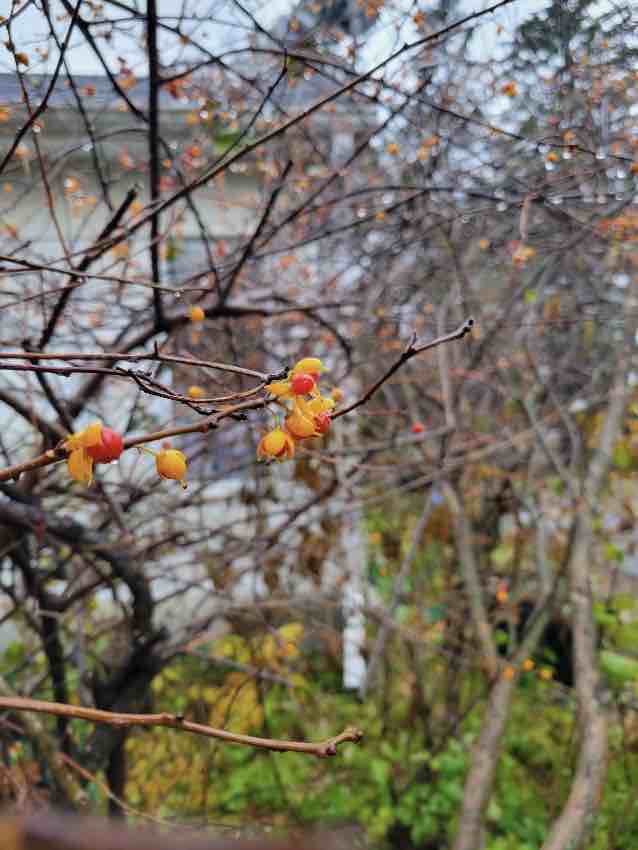Your cart is currently empty!
Joe Pye Weed
Spotted Joe Pye Weed is a striking plant that grows tall with sturdy stems which bloom from midsummer to early October.
Your cart is currently empty!
Cattails are upright perennial plants that emerge from creeping rhizomes. My American bittersweet vine has beautiful orange berries on it at the moment and it will be a good addition to my bird-feeding resources.
Greetings fellow gardeners,
I am waiting for the temperature to start creeping down, but for now I am enjoying the warmth. I took the opportunity to wander through my space to see what was happening and came across a stand of goldenrods with so much food for the foraging birds and insects. My tiny pond is filled with cattails (genus Typha). This is both a blessing and a curse. Cattails grow freely near my pondï and every part of a cattail is an edible addition to the environment. They provide food and shelter to many small creatures and I often see birds perching on them. These past few years I have left them for the winter and thinned them out in the spring. If you decide to grow cattails be aware that they will spread unless you take control of them. Cattails produce a large amount of seed and will send up tiny shoots everywhere. All parts of the cattail are edible, but I have yet to eat them. The down they produce used to be used to stuff pillows and their stems can be woven to make mats. A very versatile and useful plant, but do approach with caution. One method to get around their invasiveness would be to grow your cattails in a pot.
My American bittersweet vine has beautiful orange berries on it at the moment and it will be a good addition to my bird-feeding resources. This is a native plant (not the non-native Oriental bittersweet) that I planted years ago before I was aware of its aggressive tendencies. I am constantly trimming it to keep it contained and it can take over everything if left alone. Those lovely berries are poisonous to people, so be careful with it around small children. I do like that it is a source of food for the birds. We need our birds to take care of those nasty bugs that eat our vegetables. A study done by the American magazine ‘Birds and Blooms’ showed that chickadees eat more mosquitos than any other bird. I like that I can support such a hard-working bird.


I feed my birds all year round, but I increase my efforts as the winter comes. I use sunflowers and niger seed and fat to feed the many birds that visit. I have squirrels as well, but I try to make things difficult for them. The woodpeckers enjoy the fat while chickadees eat everything. At present I am looking into finding something to keep water available for them year-round. Another visit to the feedstore is in order.
This year of COVID-19 has made me appreciate my garden so much more. My garden gave me purpose and pleasure and joy, and I am grateful. I decided to decorate my bird-feeding station and to also put lights around the bittersweet to add some fun to the upcoming season. The garden is not over; it is settling down for a winter’s nap. The memory of this past season will keep me energized until the spring, and knowing that there are so many other gardeners out there makes me happy.
Make sure you have cleaned and put away your pots and tools. Is the hose put away? Are all those bulbs planted? Have you protected your tender perennials? I think we are ready for the winter! Enjoy your week! Judith.
“Gardening Grief & Glory: Ed Lawrence Answers Your Gardening Questions”, with Liane E. Benoit, copyright 2006 Ed Lawrence and Liane E. Benoit.
I am sure that many of you listen to the garden phone-in show on CBC each week and enjoy Ed Lawrence’s advice. This book is laid out month by month and features questions that would be asked in that particular month. It is an interesting reference book. I find that it is like listening to his phone-in show.
Spotted Joe Pye Weed is a striking plant that grows tall with sturdy stems which bloom from midsummer to early October.
Planting second crops of peas and beans and other vegetables at this time is well worth the effort. My fourth crop of lettuce is thriving.
Discover how to cultivate wild bergamot from seed. Learn about sowing, growing, and attracting pollinators with this drought-tolerant prairie perennial.
New gardeners and even some veteran gardeners add far more garden fertilizer than their vegetables need, maybe causing plants to struggle.
The daisies, sunflowers, asters, thistles, and others , we can hardly glance anywhere without seeing composites.
Learn how to create beautiful ‘standard trees’ from shrubby plants for indoor and outdoor spaces with container gardening techniques.
GardeningCalendar.ca gets some funding from advertisers. If you click on links and advertisements at no cost to you, the site may receive a small commission that helps fund its operation.
© 2025 J&S Calendars Ltd.
Leave a Reply
You must be logged in to post a comment.